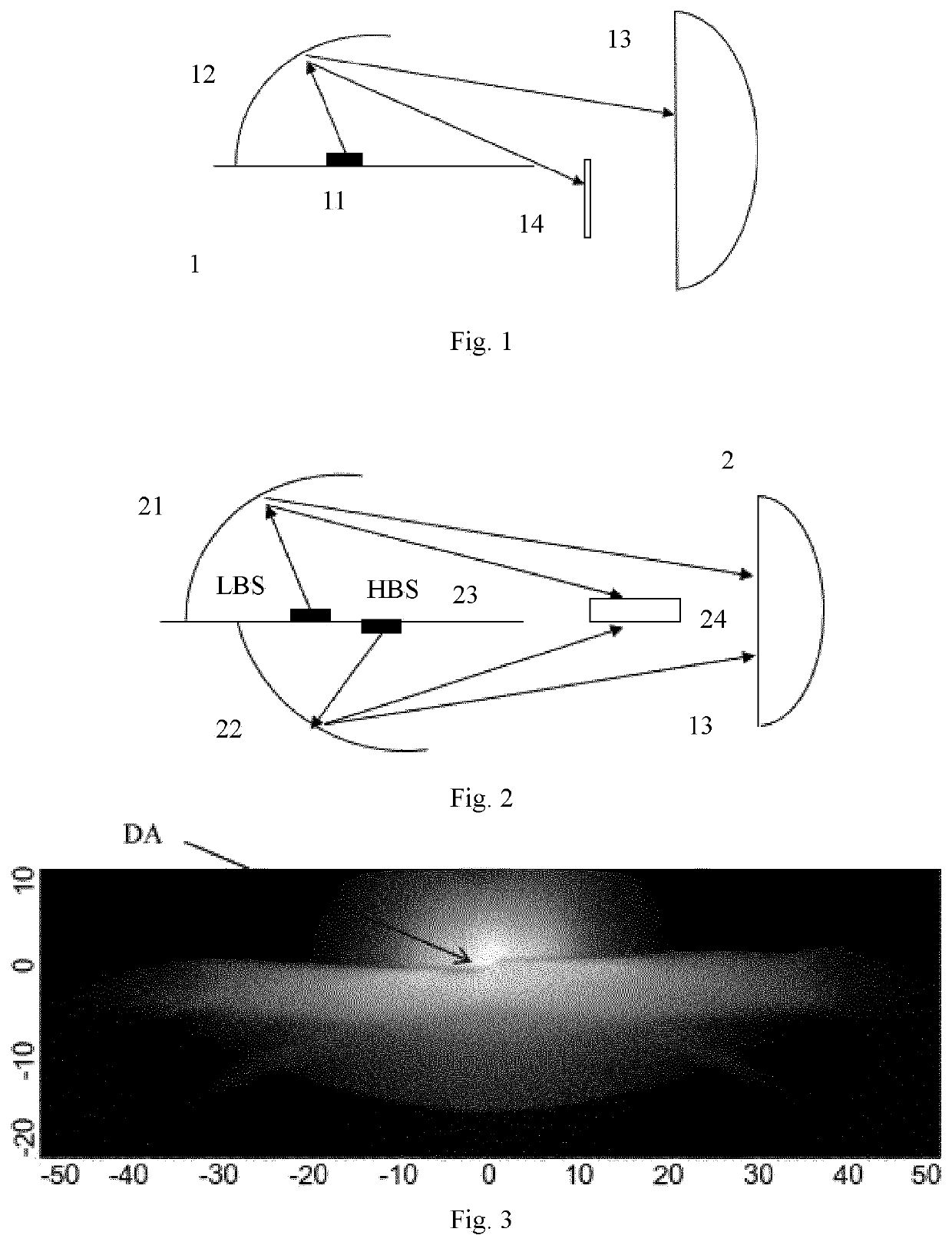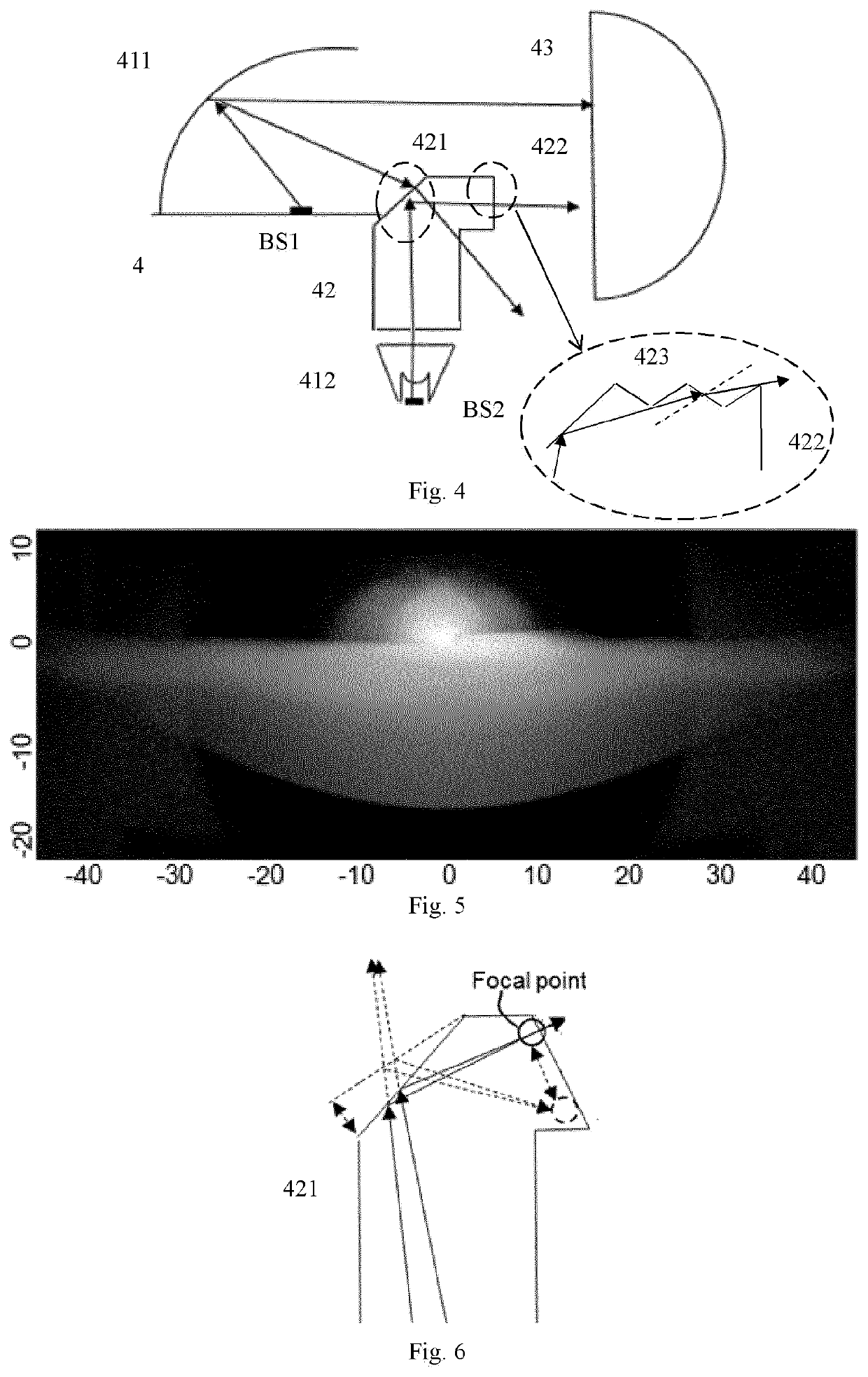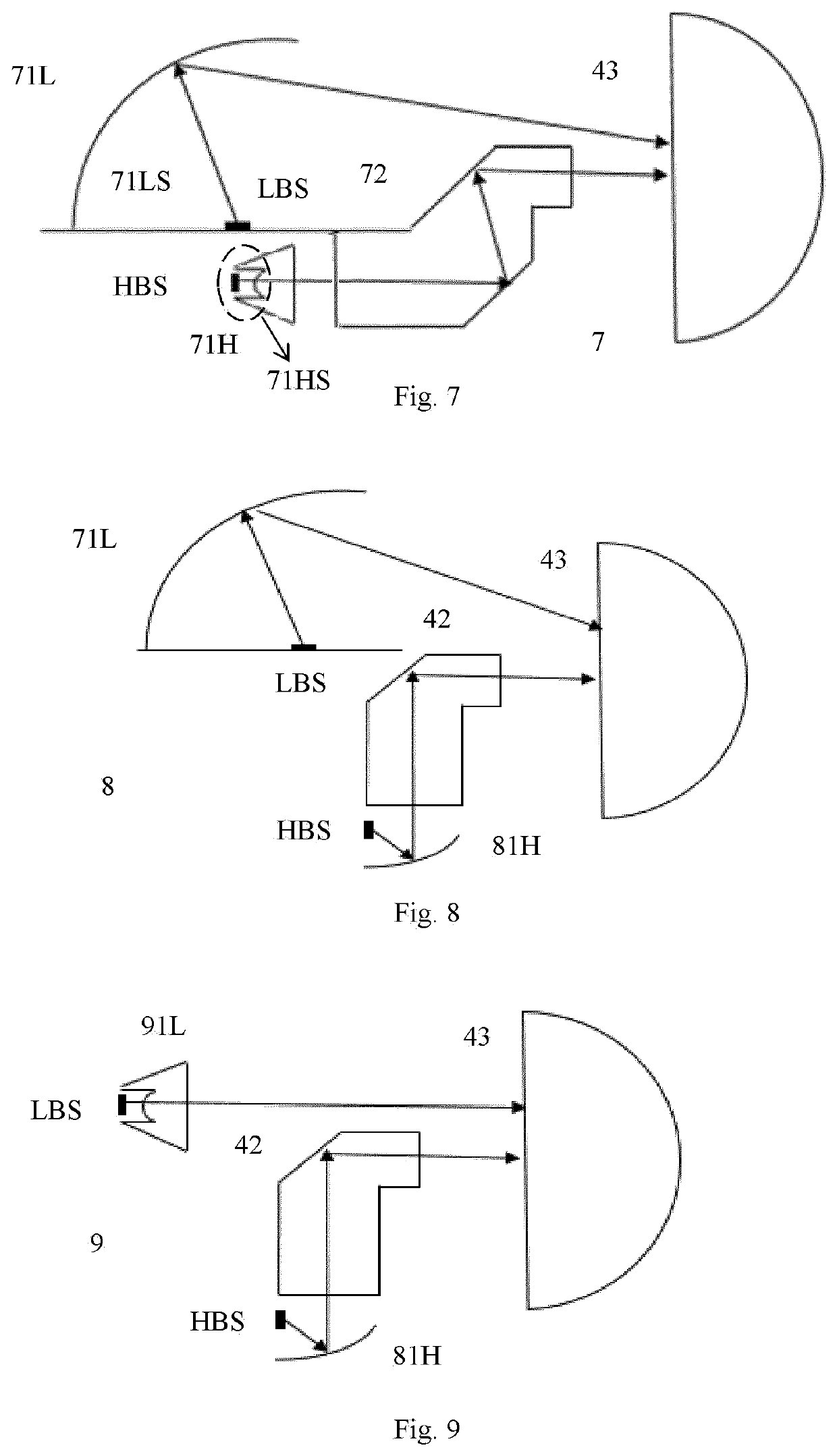Headlight system for a vehicle
a headlight system and vehicle technology, applied in the direction of signalling/lighting devices, vehicle components, lighting and heating apparatus, etc., can solve the problems of easy to see non-uniform color caused by dispersion, not cost-effective, etc., and achieve the effect of eliminating or at least alleviating one or mor
- Summary
- Abstract
- Description
- Claims
- Application Information
AI Technical Summary
Benefits of technology
Problems solved by technology
Method used
Image
Examples
Embodiment Construction
[0031]While this invention is susceptible of embodiments in many different forms, there is shown in the drawings and will be described in detail herein one or more specific embodiments, with the understanding that the present description is to be considered as exemplary of the basic principle of the present invention and not intended to limit the present invention to the specific embodiments shown and described herein.
[0032]It should be noted that various components in different figures are not drawn to scale. Besides, relative positions between individual elements shown in the figures are only used to illustrate the basic principle of the present invention and should not be considered to limit the scope of the present invention.
[0033]As discussed in the background section and shown in FIGS. 1-2, an opaque shutter 14, 24 is usually used in the traditional front-lighting systems 1, 2 of a vehicle. This opaque shutter 14, 24 tends to cause a dark area (see DA in FIG. 3) in the final p...
PUM
 Login to View More
Login to View More Abstract
Description
Claims
Application Information
 Login to View More
Login to View More - R&D
- Intellectual Property
- Life Sciences
- Materials
- Tech Scout
- Unparalleled Data Quality
- Higher Quality Content
- 60% Fewer Hallucinations
Browse by: Latest US Patents, China's latest patents, Technical Efficacy Thesaurus, Application Domain, Technology Topic, Popular Technical Reports.
© 2025 PatSnap. All rights reserved.Legal|Privacy policy|Modern Slavery Act Transparency Statement|Sitemap|About US| Contact US: help@patsnap.com



